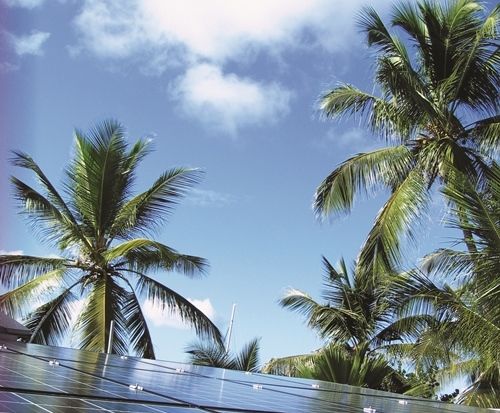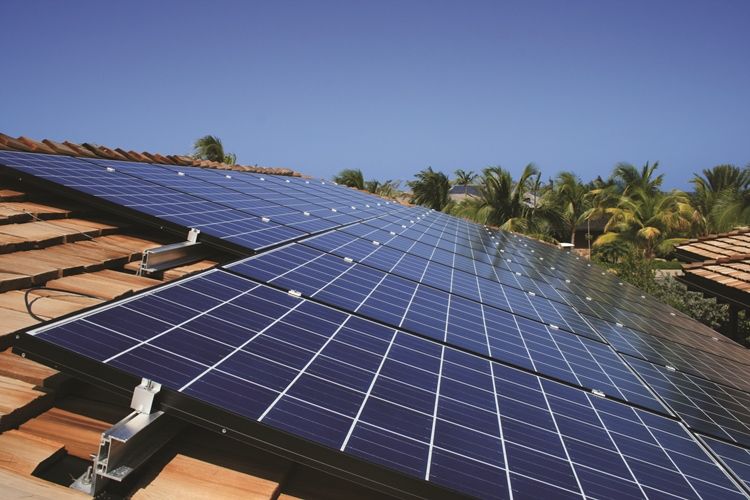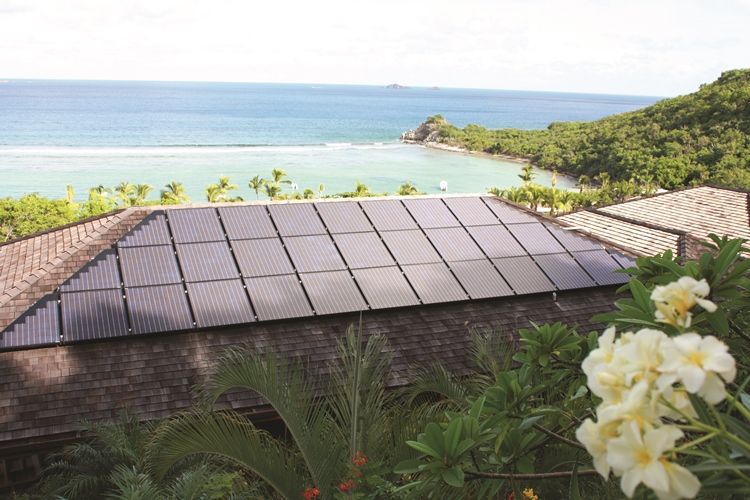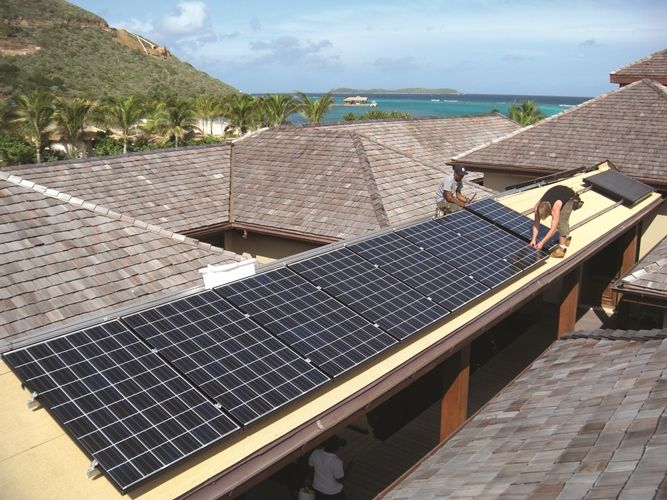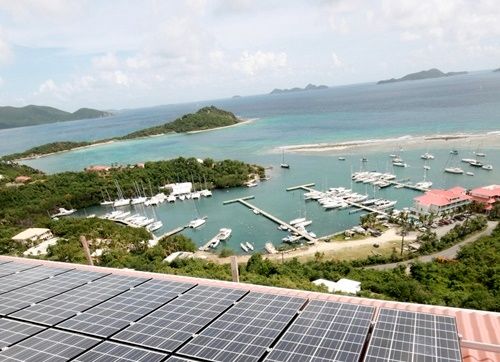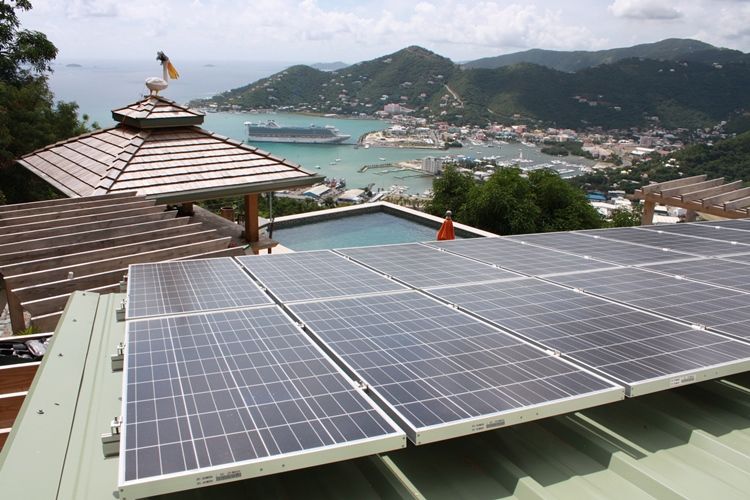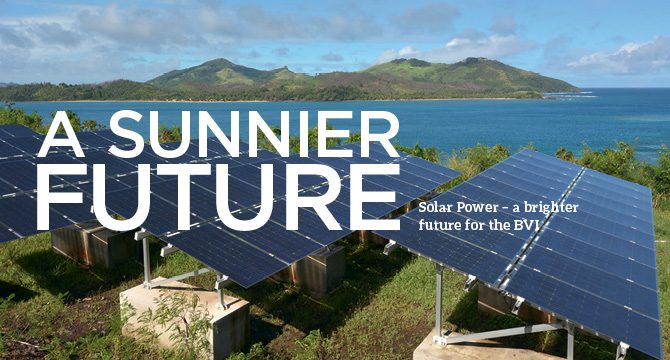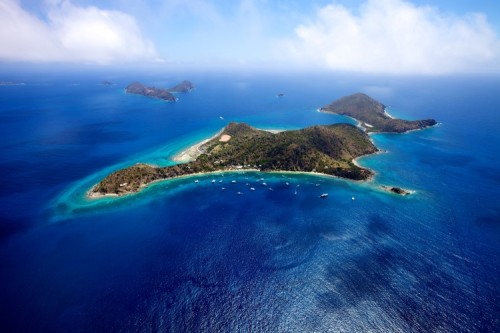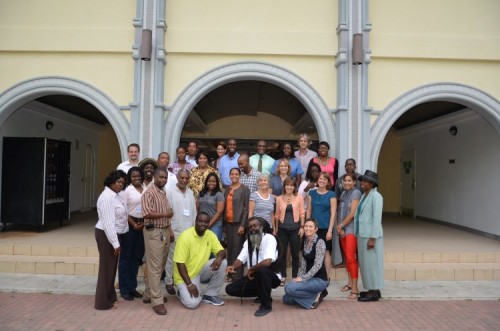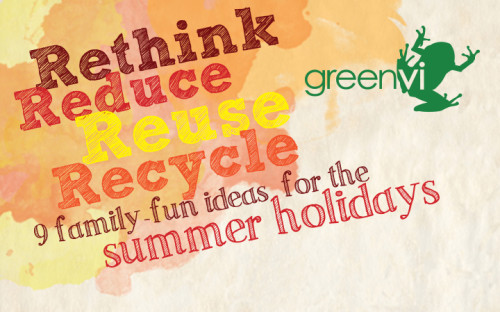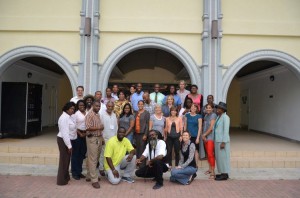Feed Two Birds with One Scone – Solar Energy in the BVI…nothing but good news
Photography provided by Alternative Energy Systems (AES)
The old phrase killing two birds with one stone seems wrong when you are talking about something good. And this is really good; however, if you live in a cave, under a rock or simply prefer candlelight, then this article is not for you.
For the rest of us who enjoy the comfort of electricity and modern conveniences, there is very good news, but like any positive information worth sharing, first I must deliver the not so pleasant bad part.
In the British Virgin Islands (BVI), there is a high cost to electricity usage as many will be aware. In fact with the exception of a few other island nations like Tonga and our neighbours in the USVI, this region sees the highest electricity rates on the planet. There is a good reason for this – the infrastructure required to generate and distribute electricity costs a great deal of money because it is spread over a small population rather than a large one. Therefore, the rate per person is higher.
Diesel is a particularly costly fossil fuel that is used in the BVI to create electricity from the power plant. Diesel and other fossil fuels have been rising in cost over time and it is highly likely that the cost will continue to escalate.
In the BVI, we utilise the centralised distribution model where electricity is produced in a few facilities and distributed through the grid to specific outlets, creating hefty electricity bills. Here’s the good part: renewable energy systems—alternative sources that have proven to provide a cheaper electricity bill—can be integrated on a large utility commercial scale and on smaller residential applications.
For this reason, renewable energy systems tend to foster a more decentralised distribution model where there are many smaller systems feeding into the utility distribution system, or operating independently from the utility entirely.
This trend towards decentralisation can already be seen in the outlying isles Peter Island, Cooper Island, Norman Island, Guana Island, Moskito Island, Neckar Island, Eustatia Island, Scrub Island, Bellamy Cay and Little Jost Van Dyke.
These islands produce their own power and many of them integrate a renewable energy source into their power production, or are in the planning stages for implementation. Plans to integrate solar power production into BVI Anegada’s energy mix are already underway.
The reason these organisations and islands integrate renewable energy into their power grid is simple. It’s less expensive. When analysing the cost of diesel power generation—maintenance, labour, diesel and diesel delivery—it becomes clear that the payback on renewable energy power production is a fantastic trade off – estimated at 5 years.
In the case of Cooper Island Beach Club, the payback was approximately 3 years on its solar electric / battery-based hybrid system. This valuation does not take into account the added value to an individual’s property when a renewable energy system is installed. It is revealed that investment into renewable energy at the utility scale would be cost effective in the long run while boosting the country’s energy independence and security.
This investment would open up new markets and create jobs in the renewable energy industry while providing millions of dollars in savings on diesel fuel. For private homeowners, this would be rewarded in an amicable budget for luxuries or simply an easier shopping bill. The main incentive for the BVI is that the BVI Electricity Corporation (BVIEC) needs to meet the growing energy demands of the territory. However, where can the money come from for this investment in renewable energy?
The answer is to divert further spending from expansion of diesel energy power production to renewable energy sources and battery storage facilities, but there’s an even better solution – let the private sector donate towards the expansion.
At the moment, private homeowners will most likely see their electricity meter spin one way – forward. The numbers on the dial steadily increase causing nausea, cold-sweats, dizziness and frustration. Do not despair. There is a cure to this insanity – the Net-Meter.
This is a meter that spins forwards and backwards. If you have a renewable energy system on your house and you are producing more electricity than you are consuming, then the numbers on the meter will begin to decrease.
If individuals in the BVI were permitted to install a Net-Meter, then they could produce energy for less than utility rates. With individuals investing into power production, they can help the BVIEC meet the growing energy demand while reducing their own power bill.
As an additional bonus, this solar power production would be greatest during the times when air conditioning units are at peak demand.
I know what you are thinking at this point. Great! Save money, save the planet. You are not alone. The BVIEC recognises these benefits and the BVI Electrical Inspection Unit is working on a procedure for application and inspection of renewable energy systems.
Meanwhile, draft legislation has been drawn up for changing the law that prohibits residents from producing their own primary power. This draft legislation is being submitted to the Government Cabinet, hopefully, in the near future.
Once the new law is passed it will open up a new energy industry in the BVI which will create skilled jobs, save property owners money and provide a prosperous future. Nothing but good news – unless you have withdrawn from the comforts of civilisation and dwell in a cave.
